Deportation within 24 hours | JUNE 27
While antisemitism was by no means a new phenomenon in Yugoslavia—as a matter of fact, especially since World War I, the entire political spectrum found reasons to attack Jews—under the impact of events in Germany, the situation deteriorated in the 1930s. Fritz Schwed from Nuremberg was under no illusions regarding his and his family’s temporary refuge. In this lengthy letter to his old friend from Nuremberg days, Fritz Dittmann, who had fled to New York, Schwed describes the dismal situation of emigrants in Yugoslavia, who are routinely expelled with just 24 hours’ notice. Even older people who have resided in the country for decades are not exempt from this cruel policy. Emigrants are forbidden to work, and when they are caught flouting the prohibition, they have to be prepared for immediate expulsion. Concluding that “There no longer is room for German Jews in Yugoslavia, and it seems to me, nowhere else in Europe, either,” Schwed explores possibilities to immigrate to Australia or South America.
Gestapo warrant for protective custody | JUNE 29
The Gestapo warrant for protective custody dated June 29, 1939 confirmed the hitherto merely formal arrest of the Jewish and communist painter Lina (Lea) Grundig (also see June 1). After her conviction of high treason, she was held at the Dresden Court Jail.
Shattered existence | JUNE 26
The first major rupture in artist Gustav Wolf’s biography had occurred during World War I. He had volunteered for frontline duty and was badly injured. His brother Willy was killed in combat. The works in which he processed his wartime experiences leave no doubt about his feelings. Instead of glorifying war, he shows its horrors. His confrontation with antisemitism during and after the war led him to an increased awareness of his own Jewishness. In 1920 he accepted a professorship at the Baden Art School in Karlsruhe, trying to realize his ideal of an equitable partnership between teacher and student. After a year, he quit this “dead activity,” referring to the school as “an academy of schemers.” In 1929, he designed the set for Fritz Lang’s silent film “Woman in the Moon,” an early science-fiction movie. Upon the Nazi rise to power in 1933, he canceled his memberships with all the artists’ associations to which he had belonged. In his letter to the Baden Secession, he explained his decision with the following words: “I must first get my bearings again. The foundations of my existence have been called into question and shaken.” After extended stays in Switzerland, Italy and Greece, he returned to Germany in 1937. In February 1938, he boarded a ship to New York. June 26, 1938 was his 49th birthday.
Liver dumplings, Christmas stollen, matzo balls | JUNE 25
In Anni Buff’s personal recipe book, dated June 25, 1938, traditional Bavarian dishes, like liver dumplings, Christmas stollen, and cottage cheese doughnuts, certainly outweighed traditional Jewish ones, such as matzo balls. The Jewish community in her native Krumbach was well integrated. Since its peak in the early 19th century, when it constituted about 46% of the population, its ranks had declined considerably, and by 1933, only 1,5% of Krumbachers were Jewish. In spite of this negligible presence of Jews, National Socialism with its rabidly antisemitic message took hold fast, and even before it became national policy, Jews in the little town were harassed by SA men. By 1938, the abuse had become so unbearable that Anni’s father Julius, who dealt in upholstery material, began to explore possibilities to find a new home on safer shores, such as the US, the Dominican Republic, or Shanghai. Not even the fact that he had lost a brother in WWI and had himself served in the 16. Bavarian Reserve Infantry Regiment—along with a young Austrian named Adolf Hitler—did anything to improve his standing with Nazi authorities.
Interview at the US-Consulate | JUNE 23
After his first official attempt to immigrate had failed under adventurous circumstances, 20 year-old Heinz Ries of Berlin made another effort to get permission to live in the US permanently and legally. For months, he had struggled in the shadows as an undocumented immigrant in New York. After obtaining an affidavit of support, Ries traveled to Havana and visited the US consulate there on June 23, 1938. Finally, he was admitted legal entry into the United States. After the war he returned to Germany for some time, first in the employment of the Allies, then as a photo journalist for the New York Times. The photographs of the Berlin Blockade and the Airlift, taken during these years, made him world-famous under the name Henry Ries.
Billy Wilder | JUNE 22
Samuel (later “Billy”) Wilder had a mind of his own: born in 1906 into an Austrian-Jewish family in the Galician town of Sucha Beskidzka, then part of the Austro-Hungarian Empire, he was expected to join his father’s business, which consisted mainly of a chain of railroad restaurants. But after the Realgymnasium and a brief stint at law school in Vienna (he dropped out after three months), he decided to follow his true leanings. At the paper Die Stunde, a tabloid of questionable repute, he got his first shot at practicing his writing skills. In 1926, an opportunity arose for him to move to Berlin, where he freelanced for various tabloids and took up screenwriting. After the Nazis’ ascent to power, Wilder first moved to Paris and was given the opportunity to direct his first movie, Mauvaise graine. In 1934 he entered the US on a visitors visa. From 1936, he was under contract at Paramount Pictures. June 22, 1938 was his 32nd birthday – the sixth he celebrated in exile.
No Jews allowed | JUNE 2
In 19th century, the Central Association of German Citizens of Jewish Faith began to publish lists of spas and hotels at which Jewish guests were not welcome. Some resorts even advertised themselves as judenfrei (“free of Jews”). After World War I, the phenomenon known as Bäder-Antisemitismus (“spa antisemitism”) increased, and with the Nazi rise to power in 1933, it became official policy. By 1935, Jews had been effectively banned from the Northern German bathing resorts, and from spas in the interior of the country by 1937. It was not until the Anschluss in March 1938 that Jews were pushed out of Austrian spas as well. Bad Ischl and other locations in the Salzkammergut region were particularly popular with Jews, to the point that in 1922, the Austrian-Jewish writer Hugo Bettauer quipped that “it caused a stir when people suspected of being Aryans showed up.” In a notice from June 2, The Jewish Telegraphic Agency reports that at the behest of the Nazi commissioner in charge, Jews were to be “segregated in Jewish hotels and pensions” and were no longer permitted to attend cultural events in Bad Ischl.
Improvisation impinged | JANUARY 7
Werner Wilhelm Dambitsch was born on June 23, 1913 in Breslau (today Wroclaw, Poland). Werner was interested in music from an early age, but he had to purchase his first instrument, a saxophone, with money he had earned himself. He did this in 1932 at the age of 19 and founded with four friends the ‘Excentric [sic] Jazz Orchester’. In order to perform, the combo had to join the “Reichsverband der jüdischen Kulturbünde in Deutschland” (Reich Association of Jewish Cultural Federations) and was forced to change the name to “Erstes Jüdisches Jazz-Orchester” (First Jewish Jazz Orchestra). While the association did not guarantee steady income or employment, at least it allowed the artists to perform at events attended by Jewish audiences. This image shows Werner Dambitsch’s Kulturbund membership card.
Blackmailed into emigration | DECEMBER 29
The large-scale arrests of Jewish men during the November Pogroms – around 30,000 were incarcerated at the Sachsenhausen, Buchenwald and Dachau concentration camps – fulfilled its purpose: it served to blackmail Jews into giving up on their remaining assets and emigrating. Among the 10,911 Jews held in Dachau alone were Georg Friedmann, owner of a fashion shop in Schwandorf (Bavaria) and his son, Bruno. Lillian Friedman, his wife, lost no time. Already in November, with her husband and son still incarcerated, she went to the travel agency of the Hamburg-America-Line in Munich for a consultation, which was followed by an intensive correspondence. Thanks to a wealthy relative in New York (who had heard about them for the first time in this context), they had received an affidavit. The plan was to travel to New York via Cuba. On December 29th, the Hamburg-America-Line issued a receipt to Mrs. Friedmann for the passage from Hamburg to Havanna of her son, Bruno, and her mother-in-law, Amanda Friedmann.
Not the country of her dreams | DECEMBER 28
Stella was not thrilled about the idea of living in Palestine. Like her friend, Annemarie Riess, with whom she shared her feelings on December 28th, she had fled to Italy. But as a Jew, she was no longer welcome there, either. According to the fascist regime’s new racial laws, non-native Jews were to leave the country within six months. 2,000 of the 10,000 foreign Jews who had settled down in Italy before 1919 were exempt from the provision. At least Stella had an immigration certificate for Palestine, issued by the Mandatory Government, and at a Tel Aviv clinic, an unpaid position that came with free room and board was waiting for her. Nevertheless, she continued to try to get permission to enter the US or England. Actually, even the offer on an unpaid position was more than many immigrant physicians could expect in Palestine. Since 1936, there was a surplus of physicians in the land, and a new wave of immigration after the annexation of Austria in February 1938 (“Anschluss”) had aggravated the situation even more.
Homesick | DECEMBER 27
At 16, Heinz Ludwig Katscher was among the older German-Jewish children the British government had agreed to accept as temporary asylees. His parents, the engineer Alfred Katscher and his wife, Leopoldine, as well as his younger sister, Liane, had stayed behind in Vienna. The boy, traveling with a group of youngsters all of whom were too young to go to an unknown place on their own, had clearly expressed feelings of homesickness in his first letters home, since his father refers to the topic lovingly and reassuringly. Even though Mr. Katscher obviously misses his beloved son, he comes across as upbeat: allegedly, the “American permits” are on their way, thanks to which the family is feeling “more determined and secure.” He is exuberant in his praise for his son’s accomplishment in traveling to England without his family and expresses his confidence in the teenager’s ability to make the right decisions regarding his future in England.
No new arrangement for siblings | DECEMBER 26
Due to the perception prevalent since the middle of the 19th century that immigrants, preferably from Europe, were needed to populate the vast expanses of Argentina, the country’s immigration policy was comparatively generous. But already following WWI, the country’s needs for manpower were perceived as saturated, and by the 20s, administrative barriers to immigration were put up. With victims of Nazi persecution seeking refuge, immigration policy was tightened even more. Nevertheless, many thousands of German Jews as well as political adversaries of the regime found refuge in Argentina. Among them was Max Busse. His sister, Anna Nachtlicht, had heard about plans of the Argentine government to ease immigration and make it possible to request permits for siblings. Max immediately went to make inquiries, but the results were sobering. In this December 26th letter, he is forced to tell her that no such plans seem to exist. Relatives in France had offered the Nachtlichts to stay with them to wait for their visas for a third country. Perhaps, Max suggests, it would be easier to apply from there.
Stolen art | DECEMBER 25
Jewish furriers began to do business at the Leipzig Trade Fair in the middle of the 16th century. For hundreds of years, Jewish traders were allowed into Leipzig only during the fair, but even so, they significantly contributed to the city’s wealth. In the wake of the legal equalization of the Jews in the 19th century, Jewish furriers began to settle in Leipzig, concentrating on a street known as Brühl. Over time, Jews helped to turn the city into an international center of the fur trade. After 1933, many Jewish furriers fled to centers of the trade abroad. Siegmund Fein, born in Leipzig in 1880, was still in Leipzig in 1938. His and his wife’s ordeal under the Nazis culminated during the November pogroms. Siegmund Fein was incarcerated at the Buchenwald concentration camp from November 11th to 30th and badly maltreated. After his release, he was refused appropriate medical care. On December 20th, he fled to Brussels. The painting displayed here, “Head of a Girl” by the German classicist painter Anselm Feuerbach was confiscated by the Nazis – along with other works of art from the Feins’ collection.
At the mercy of Nazi authorities | DECEMBER 24
Not long after power was handed to the Nazis, the motto “Police – your friends and helpers,” which already during the Weimar Republic often reflected a hope rather than reality, lost any hint of meaning for opponents of the regime and for the country’s Jews. A law introduced as early as February 1933 stipulated that police officers who resorted to the use of firearms against people perceived as enemies of the regime were to go unpunished. As part of an unholy trinity, in tandem with the SA and SS, the police quickly became an instrument of Nazi terror. Therefore, obtaining a police clearance certificate was probably not the easiest of the requirements of would-be immigrants applying for US visas. On December 24th, 1938, this important document was issued to Ernst Aldor, a resident of Vienna.
Bureaucracy without empathy | DECEMBER 23
America was struggling with economic difficulties, and an unfavorable attitude towards “aliens” prevailed in Congress. Among much of the populace, the idea of admitting large numbers of Jewish immigrants was not popular, and President Roosevelt was not inclined to relax America’s immigration restrictions. Thus, when Alice Rice of Virginia Beach tried to facilitate the immigration of her Czech relatives, she received the standard answer from the acting chief of the Foreign Office’s visa division, Eliot B. Coulter. He emphasized the importance of proving that the applicants were not likely to become “public charges” and pointed to the provisions of the 1917 Immigration Act, which, in addition to economic prerequisites, made immigration dependent on a host of conditions grounded in considerations of a political, racial, moral and health-related nature, as well as stating that a person 16 or more years of age was eligible for immigration only if literate. Despite the valiant efforts of Frances Perkins, Secretary of Labor, whose department was in charge of immigration and naturalization issues at the time, US policy was not revised to accommodate the needs created by the wave of refugees coming out of Nazi Germany. Interestingly, one of the justifications for this was that the German quota was actually never filled – without mentioning, of course, that this was a result of the “public charge” provision, which made it impossible for many German Jews, who had been systematically driven into poverty by the Nazis, to successfully apply for visas.
No respite for Jews at German spas | DECEMBER 22
Already in the late 19th century, hostility towards Jews was common in German spas, some of which advertised themselves as “free of Jews.” In the Baltic and North Seas, entire islands presented themselves as anti-Semitic. Nevertheless, some had a small Jewish population. On the beaches of the North Sea health resort of Wangerooge, swastika flags were displayed as early as 1920, just after becoming the symbol of the Nazi party. When the Nazis had been voted into power, the situation became even harder for the island’s Jews. On December 22nd, 1938, Fritz Jacoby, himself a beneficiary of the work of the Boston Committee for Refugees and a recent arrival to the United States, turned to Willy Nordwind, its co-chair, on behalf of Marga Levy, a 24-year-old native of Wangerooge. In the wake of the pogrom of November 9-10, all of her male relatives had been incarcerated, there was no money and no way to make a living. Thus, the grateful Mr. Jacoby implores the Committee to provide the young woman with a “domestic affidavit” which would enable her to “work day and night to feed her parents.”
Stigmatizing bureaucracy | DECEMBER 21
On August 17th, a provision was added to the Law on Alteration of Family and Personal Names, forcing German Jews to identify themselves as Jews by adding the name “Sara” or “Israel” to their given names. This provision was slated to come into effect on January 1st, 1939. The registry office in charge and local police were to be notified of the implementation of the provision until the end of January. This notification by the Friedmann family, dated December 21st, 1938, to the local police authorities in Schwandorf, Bavaria, falls into this context. It also communicates that the registry offices in charge have been notified of the imminent name changes of Amalie, Bruno, Lillian and Georg Friedmann.
Emigration as a condition for release | DECEMBER 20
On November 10th, in the course of the pogroms sweeping the entire Reich, Ernst Aldor, an electrical engineer, was arrested in his own home in Vienna for the crime of being a Jew. He was deported to the Dachau concentration camp 366 kilometers west of his home town. On December 9th, he was released. During the period of his incarceration, his wife Renée received an entry permit for Bolivia and a telegram from her cousin, Emil Deutsch, in America, confirming that an affidavit was being prepared. Australia was a third option the couple had considered as a place of refuge. To prepare for emigration, Renée Aldor, a native of Hungary, procured this document from the registry office at police headquarters in Vienna, dated December 20th, listing all her residences in the city since 1920.
Contradictory messages | DECEMBER 12
The banishment of Jews from public spaces was far advanced by now. Already in 1933, Jewish creative artists had been dismissed from state-sponsored cultural life. Since November 12th, 1938, Jews were no longer admitted even as audience members at “presentations of German culture” and were banished from concert halls, opera houses, libraries and museums. More and more restaurants and shops denied access to Jews. On Dec. 12th, 1938, the Jewish Telegraphic Agency pointed out a striking discrepancy: while abroad, the “German News Bureau,” the central news agency of the Reich which followed the directives of the Propaganda Ministry, spread the information that from January 1st, 1939, certain anti-Semitic measures would be relaxed, quite the opposite had been communicated to Jews inside the Reich. One fact, however, was not hidden: the goal was to prompt all Jews to emigrate, “also in the interest of the Jews themselves,” as the Bureau put it.
Kindertransport | DECEMBER 2
Following the November Pogroms, individuals and groups in England, among them faith-based organizations, demonstrated through their relentless refugee advocacy and organizing how effective determined action by citizens can be. Among those who lobbied the British government specifically on behalf of Jewish children was the Society of Friends (Quakers). After initial rejection by Prime Minister Chamberlain, a delegation composed of Jews and Quakers met with Home Secretary Hoare, following which the government gave permission to issue visas and facilitate the children’s entry into the country. Within the shortest time, host families were recruited, donations solicited, tickets booked, transit visas organized (the children traveled via Hoek van Holland). The network of Jewish and non-Jewish helpers included Dutch volunteers who welcomed the children at the border, gave them food and drink and accompanied them all the way to the ship in Hoek van Holland. The first group arrived at Harwich on December 2. The organized efforts to rescue Jewish children from Nazi Germany later came to be known as “Kindertransport.”
Their only hope | NOVEMBER 29
In 1903, in the wake of the Kishinev pogrom, the British government agreed to allow European Jewish settlement in a territory then known as the “East Africa Protectorate,” today’s Kenya. Due to massive opposition from within the Zionist movement, the plan, known by the misleading name “Uganda Scheme,” did not come to fruition. 35 years later, Paul Egon Cahn, most recently a resident of Cologne, found himself in Rongai, Kenya. After the November pogroms, the 20-year-old car mechanic began to try to get his parents out of Germany. While European settlers and members of the local Indian community in Kenya opposed the immigration of Jewish refugees, the “Kenya Jewish Refugee Committee,” which had facilitated his immigration, was supportive. Thus, the young man turned to its secretary, Israel Somen, for help: he urgently needed the £100 the British Colonial Office charged for two entry permits.
Help among friends | NOVEMBER 28
Willy Nordwind, co-chair of the Boston Committee for Refugees, tirelessly endeavored to save Jews from the grip of the Nazis by helping them immigrate to the United States. Himself an immigrant from Germany and familiar with the requirements, he helped organize affidavits and saw to it that newcomers with fields of expertise as heterogeneous as “tobacco and clothing retail business,” “tourism,” “expert buyer and salesman of hosiery,” and “wholesale fish dealer” found employment in America. Most of the people he helped were total strangers to him, but some of his beneficiaries were personal acquaintances. On November 28th, 1938, his friend Seppel pleads with Nordwind to find a special arrangement for him that would speed things up. Requests for visas had risen sharply since the pogrom night of November 9th to 10th (later known as “Kristallnacht” or “Night of Broken Glass”), and the usual waiting period for the processing of affidavits was far too long.
An unexpected gesture | NOVEMBER 27
Thanks to his thriving practice in the Steinbühl neighborhood of Nuremberg, Dr. Adolf Dessauer had achieved a certain prosperity. His generous apartment offered a children’s room for his sons, Heinz and Rolf, maid’s quarters, space for his practice and a waiting room, a living and dining room, and, not least, a bedroom with furniture made of cherry wood. In 1937, due to the effects of anti-Semitic legislation targeting doctors, Dr. Dessauer was forced to give up his practice. Emigration was the only solution. But how to take the beautiful bedroom furniture abroad? The Nazis rendered this concern obsolete: During the November pogroms, in the night of November 9 to 10 (later known as “Kristallnacht” or “Night of Broken Glass”), the furniture was smashed to pieces and a portrait of the Nobel laureate, Paul Ehrlich, slashed and ruined. Only a few days after the shock of the brutal destruction, the Dessauers experienced a rare gesture of decency. A total stranger returned the portrait, which was by now perfectly restored.
The future of humanity and culture | NOVEMBER 26
No one reading the November issue of the Aufbau could have missed the front-page editorial message in bold print: under the heading “The Great Trial,” forceful language is employed to decry the abject failure of “the heads of state of the so-called democracies,” who have sacrificed Czechoslovakia to Nazi Germany. Jewish refugees are left stranded in no man’s land in Bohemia, in Germany, the Nazis are dealing an “economic death blow” to the Jews, the British are jeopardizing the Zionist project, and “little more than a faint memory” remains of the Evian Conference, summoned in July to tackle the problem of resettling Jewish refugees from Nazi Germany. Surely, this is “an era of complete sinfulness.” Will those under threat finally brace up?
The limits of hospitality | NOVEMBER 25
The news of the brutal acts of violence perpetrated against German and Austrian Jews during the November pogroms sent shockwaves through Jewish communities. On November 15, a group of Jewish leaders in Britain requested that their government grant temporary shelter to Jewish youngsters who were to be returned to their countries later on. On November 25, the Jewish Telegraphic Agency reported on the planned opening of a camp for 600 child refugees from Germany on the east coast of England. The British chapter of the World Movement for the Care of Children from Germany was to recruit families to offer foster homes for 5,000 children. The plan had government approval – provided the children were under 17 years of age and the costs of their support would not be a burden to the public.
Art in crates | NOVEMBER 24
Had Austria’s history taken a normal course, Hanna Spitzer, a private teacher, would probably have stayed in Vienna and grown old there as a respected member of society. As a daughter of the late jurist and patron of the arts, Dr. Alfred Spitzer, she was co-heir to a major art collection comprising works by such greats as Kokoschka and Slevogt. Egon Schiele was represented too – among other works, with a portrait of Alfred Spitzer, who had been his sponsor and lawyer, and later his estate trustee. But the flood of anti-Semitic measures which had been unleashed by the “Anschluss” (the annexation of Austria to Nazi Germany) made it unbearable and dangerous to stay: this copy of a tax clearance certificate dated November 24, 1938 testifies to Hanna Spitzer’s efforts to gather the papers required for emigration. Already in January, she had arranged for the shipping of 11 containers of household effects and paintings to Melbourne and a delivery to the address of her sister, Edith Naumann, in Haifa.
Placing trust in strangers | NOVEMBER 23
Could Willy Nordwind of the Boston Committee for Refugees—an organization not dealing specifically with unaccompanied child immigrants—be entrusted with the well-being of a 16-year-old girl? The Relief Organization of Jews in Germany was not ready to take chances: rather than just sending Frieda Diamont on her way, the organization turned to the National Council of Jewish Women in New York to ascertain Mr. Norwind’s integrity. The Council’s Merle Henoch passed on the case to Jewish Family Welfare in Boston, Mass., where Nordwind, too, was based. For her there was no doubt: as generous a helper as Willy Norwind must be a trustworthy ally.
Banned from his art | NOVEMBER 22
The works of the Expressionist painter and graphic artist Bruno Gimpel were classified as “degenerate” during the Third Reich. Neither his voluntary service as an aide in a military hospital during World War I nor his “mixed marriage” with an “Aryan” woman spared him the usual repressive measures. On November 22nd, 1938 he received a letter from the Reichskammer der Bildenden Künste, the Nazi authority in charge of the visual arts, which yet again denied him membership and banned him from all branches of his profession. In 1935, this institution of the Third Reich had once before rejected a request for admission by the Dresden artist. Since 1937, he had no choice but to make a living by giving drawing lessons to Jewish children.
For all eternity | NOVEMBER 21
Among the over 1,400 German synagogues destroyed on and around the pogrom night of November 9th to 10th (later known as “Kristallnacht” or “Night of Broken Glass”) was the Semper Synagogue in Dresden, named after its architect. While neo-Romanesque on the outside, the building featured an interior in Moorish Revival Style – a design imitated by numerous other architects of synagogues in Germany. When the building was burnt down by both the SA and SS, 98 years had passed since its festive opening in 1840, at which Rabbi Zacharias Frankel had consecrated it to the service of God “for all eternity” and extolled the “respect for religious freedom inspiring this people.”
New hope for help | NOVEMBER 20
For 19 years, Fritz Feldstein had been working at a bank in Vienna to the full satisfaction of his superiors. But, in 1938, after Nazi Germany annexed neighboring Austria, he lost his position. On July 5th, the family registered with the US consulate in Vienna, but for immigration, affidavits were needed. After months of deeply upsetting political changes, Fritz Feldstein ventured an unusual step. On Oct. 16th, he turned to a Julius Feldstein in Los Angeles who, he hoped, might be a relative, appealing to “the well-known American readiness to help.” Soon, a correspondence developed, also involving Fritz’s wife, Martha, and their daughter, Gerda. The 11-year-old was not only a skillful piano player, she obviously also had a knack for languages. On November 20th, she writes to the Feldsteins in California for the first time – in English.
Not a trace of uncle Arthur | NOVEMBER 12
Harry Kranner was a boy of 12 when the Nazis staged a wave of anti-Jewish violence unprecedented in scope and intensity – purportedly a “spontaneous outburst of popular rage” in reaction to the murder of an employee of the German embassy in Paris at the hand of a young Jew. However, Harry’s diary entries show that he was keenly aware of the events around him. In the early morning of November 10th, when the violent events of the night spilled over from Germany into Austria, two Gestapo officers had come to the family’s home in Vienna – ostensibly in search of weapons. Harry understood how extraordinarily lucky he was to have gotten away with nothing more than a scare. He had heard about Jews being locked into or out of their apartments. But one big worry remained: by November 12th, there was still no trace of his uncle Arthur, who had been arrested along with thousands of other Jews. Following a news report that all arrestees were to be deported to the Dachau and Mauthausen concentration camps from the Vienna Westbahnhof, Harry’s father and aunt rushed there, hoping to find uncle Arthur, but to no avail. Meanwhile, it was reported that the Jews were going to be charged a hefty penalty for the violence to which they themselves had fallen victim.

